Fire Safety in Schools: A Comprehensive Guide
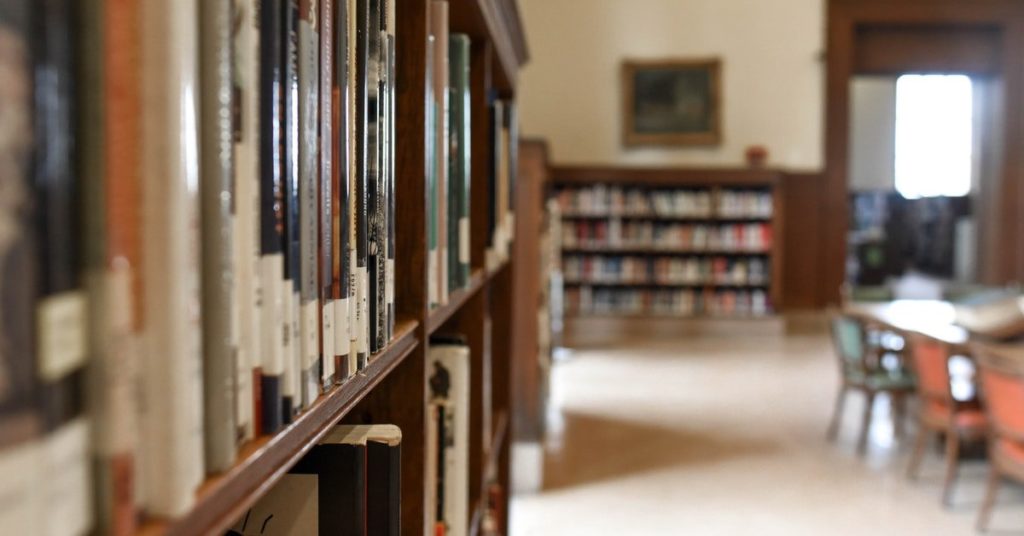
Estimated reading time: 11 minutes
Introduction
Understanding the UK requirements for fire safety in schools can be challenging. All fire safety practice in the UK, whether in commercial or non-domestic premises, is based on the Regulatory Reform (Fire Safety) Order 2005. Moreover, this document doesn’t provide specific examples for schools, or any other premises for that matter.
To make things a little clearer and more concise, here’s a summary of that legislation, as well as a whole host of other important things to consider. In this article, we’ll cover everything from the possible causes and consequences of a school fire, to the ways you can prepare for and fight one.
What are some common causes of school fires?
In order to properly understand the legislation and actions you can take against school fires, it’s wise to first understand their likely causes. UK schools pose twice the level of fire risk as other non-domestic premises; why is this?
Arson
This is the predominant cause of school fires; it is estimated to count for 60% of them. This is particularly concerning, when you consider that only 2% of UK schools are fitted with sprinklers. Arson is most often committed in school holidays when there is no-one there to detect a fire or fight it. Accordingly, an automated sprinkler system would be the best defence here, particularly considering some of these school fires have cost up to £20m.
Accidental Fires
Similarly, unintentional fires are rife in schools. On average, UK secondary schools have nearly 1000 students enrolled. This creates a huge window of opportunity for accidental fire; 1000 students cannot be scrutinised at all times. From cigarettes left behind bike sheds to the spillage of flammable chemicals, there are a whole host of ways children can cause accidental fires. Moreover, children are not often well-versed in fire safety.
Neglect of Fire Safety Systems
Failing to maintain the equipment that keeps you safe can both cause and worsen fire. This is often financially-related. Only recently has the government announced plans for a £1.5bn, nationwide ‘rebuild and repair’ programme for schools. With little prior funding, it is no surprise that 66% of schools rated poor for fire protection systems. As a result, sprinklers, smoke detectors and other equipment in schools are often poorly maintained and dated.
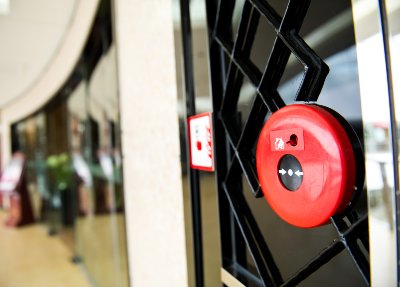
Neglect of Electricals
Choosing not to test and assess regular electrical equipment, similarly, is another common cause of school fires. Faulty wiring, lack of PAT-testing and poor appliance maintenance are some of the leading contributors to fires in schools. Electrical fires caused a significant number of the 2,000 UK school blazes from 2017-2020.
Inevitable High-Risk Areas
Even if a school’s maintenance was perfect and their chances of arson non-existent, there are various high-risk areas nonetheless. Chemistry labs are often full of bunsen burners and flammable solids, liquids and gases, particularly in secondary schools. Design and Technology workshops typically have a plethora of complex electrical equipment which can overheat, such as sanding machines, 3D printers and lasers. Even I.T. rooms, with their numerous plug sockets, demanding appliances and stacks of printer paper, can be an unnoticed risk.
Other Occupants

Finally, schools are not always solely occupied throughout the school day, nor solely by students. Before and After School Clubs often have a different staff, of whom you may not have much control over fire training and competency.
Community projects and groups may unwittingly leave lights or appliances on overnight, leave fire doors open or cause other problems.
This should emphasise that responsibility for fire safety in schools is a constant. During school holidays, the school day and extra-curricular times, you must be constantly aware and prepared for fire risk.
What are the possible consequences of a school fire?
Casualties
Thankfully, school fires don’t often claim lives or cause many injuries. Over a twenty-year period which saw some 15,000 UK school fires, only one person died. Though this is terribly unfortunate, this man wasn’t a student. This mercifully non-existent rate of pupil death in fires is due, in large part, to proper fire drills and evacuation procedures in UK schools.
Moreover, whilst the aforementioned risk of fire in a school is much higher, the fire injury rate is actually much lower than in other non-domestic premises. This is perhaps owed to the size of school buildings and the inherent organisational advantages schooling poses. After all, students are used to listening to and following the instructions of a teacher. In the same 20-year period referenced above, there were less than 500 injuries, many of which were not severe.
Of course, this doesn’t eliminate injury and death as possible consequences of school fires. However, it does suggest that current legislation and procedures are effective.
Finances
Complex economic consequences are far more likely after a school fire than death and/or injury. First and foremost, damage caused by a fire and any efforts to extinguish it can be dear, to say the least. Average costs are around £2.8 million for repairs after large school fires, including the expenses paid by the taxpayer. Extreme cases have seen costs rise to around £20 million. Such expenses, in an era of austerity and concordantly-underfunded schooling, can cause school closures.
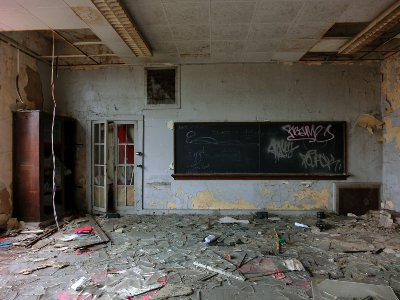
Indirect financial consequences are not unsubstantial, either. A 2001 report stated that whilst arson caused £65 million in damages to UK schools, the real cost of fires was closer to £115 million. Staff employment can be disrupted, for example, and parents may need time off work to care for children out of school.
Worst of all, the effect on exam results and subsequent futures of the affected children, is unquantifiable. These fires often happen in schools with many pupils from disadvantaged children, further compounding the situation.
What is the legislation concerning fire safety in the UK?
The UK’s current legislative reference point is the Regulatory Reform (Fire Safety) Order 2005 document mentioned earlier. Below, we’ve summarised the central points of the legislation:
Primarily, your team must appoint the Responsible Person, an overseer of fire safety onsite. This refers to anyone with some ‘control of the premises’ and often includes:
- Employers
- Facilities Managers
- Occupiers
- Landlords
- Owners
- Risk Assessor
Furthermore, take into account that there can be more than one Responsible Person. If there are a number of people responsible for the premises, they must work together in consensus towards improved fire safety.
This Responsible Person(s) has a number of tasks (to be explored further below) which they must absolutely and regularly complete:
- Deliver a Fire Risk Assessment
- Communicate those risks to staff
- Implement and maintain fire safety measures
- Provide legally-mandated, formal fire safety training to all staff members
- Plan emergency protocols i.e. fire evacuation procedures and assembly points
How is this legislation enforced?
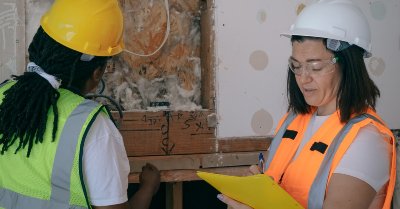
Fire safety in schools is under the jurisdiction of the relevant local authority.
All UK schools, under the Regulatory Reform (Fire Safety) Order 2005, are obliged to welcome any fire inspection from the local authorities, at the inspector’s discretion.
Upon this inspection:
- The Responsible Person could receive alteration notices from the local fire and rescue authority, from which you must implement any changes deemed necessary.
- The authorities can also issue more serious enforcement and prohibition notices, the latter of which could see the school shut down.
- The authorities can also issue fines and prison sentences; major penalties can see unlimited fines and, possibly, 2 years in prison.
Implementing the legislation
The first step in following the legislation for proper fire safety in schools is designating the Responsible Person(s). The government has not strictly defined this role. The responsibility is on those who work at or are in control of the premises, as aforementioned, to clearly establish the Responsible Person(s).
This designation may differ between larger and smaller premises, namely primary and secondary schools. In particular, secondary schools presided over by board members, or which are part of a Multi-Academy Trust, may have different levels of general health and safety responsibility. For example, a small primary school’s fire safety responsibility may be in the hands of the headteacher. However, a secondary school board may be in charge of general policy fire safety in schools. A headteacher, in this situation, may simply oversee the day-to-day fire safety practices, acting as part of a wider consensus.
Most vital, however, is that all those with some control or authority over the premises must know exactly who is/are the designated Responsible Person(s).
Fire Risk Assessment
That Responsible Person should then lead a fire risk assessment. This assessment should follow five core steps:
- Identify any fire hazards.
- Identify people at risk.
- Evaluate, remove or reduce the risks.
- Record your findings, prepare emergency procedures and provide training.
- Review and update this assessment regularly.
A competent person must complete the fire risk assessment. This is typically someone with good knowledge of fire safety protocols. If your Responsible Person doesn’t feel confident with this, or your school board wants some peace of mind, you can hire a professional risk assessor.
Common Risk Areas
You should tailor the fire risk assessment to the needs of the school and the questions posed by its premises. Accordingly, one can’t really write an absolute checklist for every school building, as they’re all different. However, there are some online guides for educational premises which are a good starting point. In addition, here’s a few areas to think about:
What is your maximum occupancy?
How many people can safely be in your building at one time? This is vital to fire safety management; if you know the maximum number of people you have to evacuate in a fire, you can plan better. Take into account Parent Evenings, School Fairs and other events which may swell numbers in the building.
How will you cater for differently-abled students?
Some students might need wheelchair-accessible exits; hearing-impaired children might need a ‘buddy’ for fire drills and evacuations. In addition, you should inform one-on-one teaching assistants of their responsibility for any children with learning difficulties.
How will children adhere to an evacuation plan?
Obviously, you can’t train children in fighting fire or proper fire safety practices. Unlike an office worker, if a child sees a fire, one can’t expect them to remain calm. How can you ensure that school children retain enough information to understand their fire evacuation procedures and assembly points? If you have a school with a large age spectrum, as many private schools do, you should provide a range of age-appropriate information.
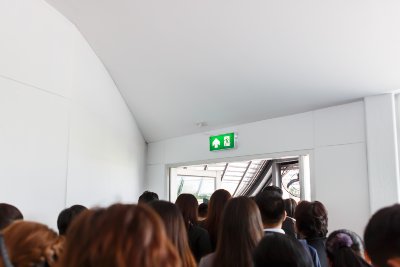
How can you keep children from accidentally igniting fuels?
Paper, wooden pencils and other flammable stationery are common to all schools. In secondary schools, bunsen burners, flammable chemicals, wood shavings and metalwork sparks in labs and workshops are all potential fire hazards. How can you and your teachers ensure children do not accidentally ignite a dangerous blaze?
How will you train your staff?
You are legally-mandated to provide formal fire safety training to all of your staff members. You can decide between having the Responsible Person train the staff (though they must do so thoroughly and on the record), taking online fire safety training or having a fire professional provide a face-to-face course.
How can you fight against arson?
As we mentioned earlier, arson is the most common cause of school fires. Fortunately, there are actions you can take to directly tackle arson. Install cost-effective sprinkler systems, safely store any potential combustibles and keep waste bins out of sight and away from buildings. Proactively, you could increase your fire awareness sessions, take more regular fire drills and refer children suspected of setting fires to local fire aversion schemes.
How can you prevent children from compromising fire safety systems?
Fire alarms, fire extinguishers and evacuation chairs can all be vital in keeping children safe during a fire. However, primary school children may accidentally activate or play with fire equipment. Moreover, secondary school children could even mess around with them intentionally. How can you work against this? You could consider regular fire education sessions, to warn students of the dangers of facing fires with broken or used equipment.
Day-to-Day Management of Fire Safety in Schools
Additionally, here’s a few examples of how you can manage daily fire safety on your premises:
- Don’t invite fires. There are some basic rules for preventing fires in any premises. Keep your fire doors closed, keep fire routes and pathways clear and don’t remove batteries from smoke alarms!
- To that end, maintain your smoke detection systems. As aforementioned, particularly in secondary schools, children may interfere with firefighting equipment. Regularly check that your extinguishers are fully charged and your evacuation chairs stored properly. Furthermore, test your fire alarms and assess your sprinklers.
- Maintain equipment and fuels which could start fires. Ensure that bunsen burner fuel lines are well-kept, flammable chemicals removed from classrooms after lessons and woodworking shops kept locked after school. Test all school appliances regularly, from 3D printers to kettles in the staff room.
Conclusion
Fire Safety in Schools is a diverse, broad subject. There is a dense catalogue of information and resources which your Responsible Person(s) must absorb and retain. So, we hope that this article has gone some way to illuminating a confusing, intimidating and daunting topic.
